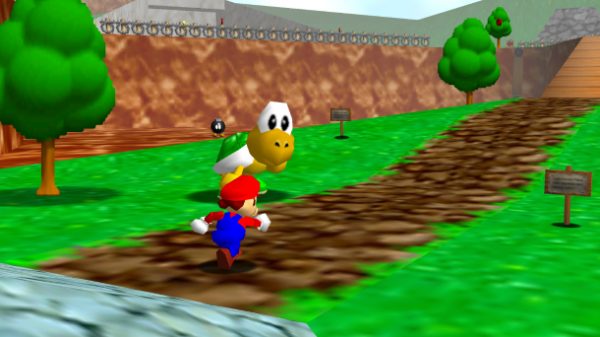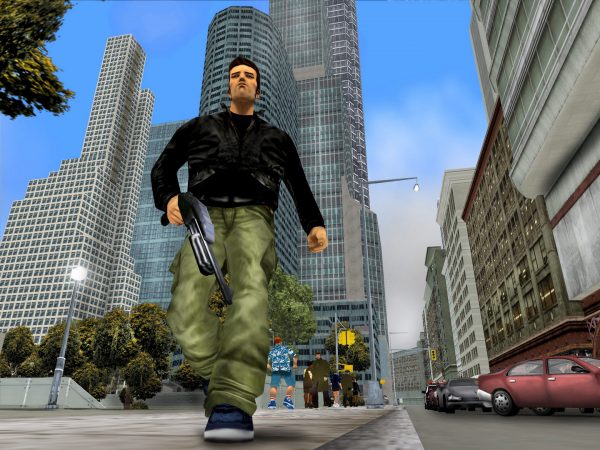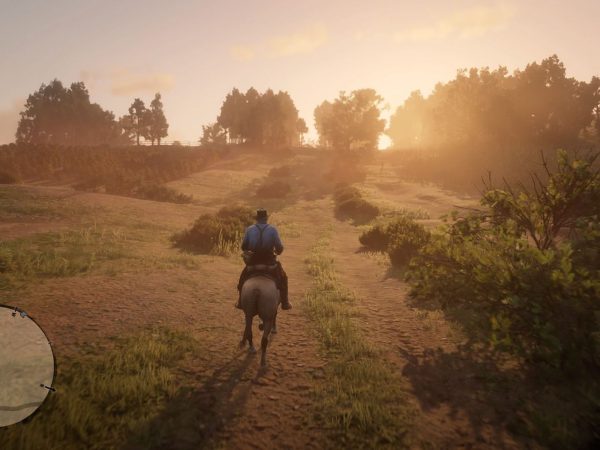
The Queen Who Never Was: Interactivity and Non-Linear Storytelling on Eleanor
‘Once upon a time, in such a such a place, something happened.’ – John Yorke
Since the ancient origins of story authors have attempted to disrupt, reorder and mimic the experience of temporality. While breaking from the tyranny of chronology may have become commonplace, breaking the linearity of how stories are told has been the preserve of pioneers with varying degrees of success. Narrative time tends to run one way.
Virginia Woolf attempted to capture something of the complex multiplicity of mental events but was still bound by the logic of sentences, TS Eliot attempted to rupture chronology in The Waste Land through ‘cut ups’ and William Burroughs would go on to popularise with his attempts at escaping the linearity. But the temporality of the typographic presentation of narrative lends itself toward linearity, owing as much to the rationalism and modernity of the era that spawned it.
In Imogen Hermes Gowar’s augmented reality walk into the past the life of Lady Eleanor Talbot, buried in Norwich and allegedly married in secret to King Edward IV, is reanimated as a compelling immersive story of the mystery of who’s bones lay there and the confabulations of history. One of the things Gower finds most interesting about the project is the possibility of escaping the linearity of her medium.
‘I think a gigantic strength of working outside of the normal form is that I don’t have to think about linearity I don’t have to think about the chronology of someone sitting down with page one of a novel and working through it all the way through to page 374 or whatever. People can experience them in any order and it doesn’t actually perhaps matter what order they receive the information in because each of their responses to whatever order will be completely valid.’
Breaking the link between authorship and ordering, presents a challenge to the authority of the author and intensifies the choice-making and individualised responses of readers.
As Gowar explained, ‘All of the stories that I’m writing are my own creative interpretation of the facts so none of them need to be privileged is asking people to engage with fiction and make their own decisions about it rather than leading them down one argument.’
The authority of the author, of course, is not absolute. But there is an understanding or bias toward certain outcomes or arguments as Gowar puts it. The possibilities here play to contemporary concerns around authority more generally, the privileging of one experience over another and the contested nature not just of facts, but of the narratives which we use to create national and personal identities.
The new form also offers space for creative play and experimentation. Gowar was keen to add, ‘I feel there’s a lot of scope there to expand it to play with the story but also to play with the technology that’s available. The story could change different times of day could you have basically a bifurcating narrative where like you crossover from one loop of story into a separate one that all of that would be fascinating.’
The renegotiation of authorship in this way, empowering the reader to choose their own path will no doubt create divisions around the defining qualities and essential purpose of literary narrative. Then there is the collaborative authorship and creativity enabled by working with the technology partners, Mutiny without whom the story could not be told. Some fiction is more didactic than others, but strands of anti-narrative aside, a great deal of story in the Western canon inevitably comes to some kind of ethical conclusion regarding the outcome of the protagonist’s choices.
Seeing the prospect of the non-linear ‘hyper-novel’ in which narrative existed as an endlessly connected stream, Susan Sontag argued for the ethical importance of temporality:
‘All stories are about battles, struggles of one kind or another, that terminate in victory and in defeat. Everything moves toward the end, when the outcome will be known.’
The prospect of narratives like Eleanor is not so much the abolition of temporality per se, but a recalibration of the role of reader and writer. Some, like James Pope, have argued that as soon as a reader becomes more active in the experience, they become a gamer and exist somewhere on Ensslin’s L-L continuum where gaming and literary qualities mix and merge.
In 1970, Roland Barthes expanded on his Death of the Author view of the writer as a scripter rather than authority, stating that his ideal text would be one in which the distinction between readerly and writerly text dissolved and that these texts would be known as hypertexts. The prospect of his ideal text materialised in the 1990s when the hyper-texts could be written in browsers utilising hyperlinks. The reader could explore rather than read a text.
However, neither Sontag’s fears nor Barthe’s hopes were realised by hyper-text fiction. Authors (or scripters, depending on your preference) found hypertext stories difficult to write. Not having definite start or end points created technical issues in terms of following an arc, creating an argument or having to constantly re-introduce characters and key points. Breaking temporality led to a kind of circularity. The experience itself could seem trivial. Readers themselves were not always open to the technological demands of hypertext, found it difficult to immerse themselves in the story or indeed simply didn’t want to become more writerly. The pioneering nonlinear stories like Afternoon, a story that seemed like the future twenty years ago live only in archives, their platforms and browsers now obsolete.
All was not lost, however. As Steven Johnson argues in Wired, dreams of the hyper-text didn’t anticipate blogs, social networks, crowd-edited encyclopaedias and I would hazard, the predominant medium for reading is now surfing the web, exploring our own niches of the internet through hyperlinks and blocks of text and medium hosted on different sites. The hypertext would be self-authored and not contained within a single text. The way we surf the web is as a network of scripters, enabling the us to curate our own experiences.
It is over thirty years since Afternoon was published. Since then, the rise of digital reading, gamification of culture, prevalence of GPS and mobile phones, augmented reality and so on mean that works like Eleanor once again offers the prospect of nonlinear storytelling. What will it meant to walk rather than read a text? How will the haptic dimension of a walk impact on the sense of authorship? Will the return of pre-typographic features of storytelling like the chance to ramble, side-track and backtrack regain a sense of play that had been rationalised out of text reproduction? Where might the gamification of literature lead?
•
In the early ‘story-games’ which emerged in the 1990s players were given agency to free roam and non-linearity was a major part of the experience. In the face of first-person shooters like Doom, more mediative games like Myst seemed a bit serene and boring. There was a tension between interactivity and gameplay. Did games even need a story?
By the mid 1990s, “open world” narratives had become popular following the release of next generation consoles like the N64 and games like Super Mario 64 which successfully offered compelling 3D gameplay the user able to move Mario through three axes in space to explore the game world.
The iconic figure of the 2D platform games was now leading the charge into three dimensions.

Rockstar pushed the limits even further Grand Theft Auto III (2001) with an open world design, environmental storytelling and content that graphically violent and sexual. The game featured an main storyline and subplots which emerged from interaction with the environment itself. Games were free to roam around, jack cars or engage in ‘kill frenzies’ if they wish or they could engage with the missions and storylines in a more linear way, but still with a degree of player freedom. While not literary in any aspects EM Forster might recognise, the game drew heavily on the Martin Scorsese’s gangster oeuvre, TV series like The Sopranos and contained more than 8000 lines of dialogue.

In 2019, Rockstar released Read Dead Redemption 2, a Western-themed action adventure game which allowed for free roaming in the interactive environment as well as more linear scenarios which are built into the game world. For many, the game is one of the greatest of all time and a watershed moment in interactive storytelling. With an estimated budget between US$370 and US$540 million, the game world is incredibly detailed and visually stunning, the score is composed by Woody Jackson and the game boasts over half a million lines of dialogue. For some, the game’s extraordinary aesthetics and realism is ‘boring’ and ‘slow’, while the verisimilitude of the bloodshed has raised ethical concerns and questions about whether a video game could be too realistic. The TV series Westworld was in fact inspired by the game, and ‘gamers’ engage in acts of sex and violence in a simulated Western setting explore the coarsening of the soul such virtualisations can have.

For all the innovation, these games are still the silent movies of their medium and games are only getting started in the world of story and the role of the author may again become prominent within a new medium. As the game developer Jessie Schell argues in The Future of Storytelling, the plotlines in video games hitherto have generally been weak and fidelity to non-linearity gameplay means game stories can’t make people cry the way Shakespeare can. If a character dies, they simply regenerate and the game begins again. Schell points toward character as the way forward and new mechanisms in AI to create game characters who can interact with the user, who can speak to them using emotion recognition capabilities, alongside multi-player participation in shared world stories.
While innovations like these promise more centrality in the culture for video games, the role of books and reading could be seen to be seen as becoming increasingly de-centered. Games having literary elements may not be enough to make any meaningful connection to literature. Dungeons and Dragons has literary ancestry in the short stories of HP Lovecraft but nobody was keen to announce the role-playing game as the next big thing for literature. When Lizzie Magie published Monopoly in 1935, John Steinbech and Elizabeth Bowen weren’t racing to claim it as the future of books. But what new forms can emerge in the space between? Literary forms existed in a pre-typographic world when the medium was textual and communicated orally. What might a post-typographic literature look like?
•
The comparison of works created by a small-scale arts project to the astronomical budgets of video game publishers is like comparing the work of indie theatre-makers to the Marvel films. But, like Hollywood, the video game publishers will have a powerful say over what becomes the mainstream in terms of interactive narrativity and the spaces that artists might occupy outside the commercial mainstream is of concern for a variety of reasons. Not least for works which are art house, to allow space for those outside the elite and to envisage a way in which indie publishers and literary authors might produce new art using open-source software to find inventive ways around budget constraints. As much as I love Grand Theft Auto and Red Dead Redemption, there must be future for forms which are not based on masculine fantasies of wild violence.
The dream of non-linearity and the reader becoming an author may have been just that. Branching stories can allow for reader freedom but also the satisfaction of a story well told. Engaged with as an environmental narrative, a landscape, virtual or physical using geolocation, can balance the need for interaction with old-fashioned storytelling. Eleanor will be an environment narrative in which ‘readers’ engage with elements of the story using geocached components on their phones while they move around the historical sites of Norwich. The narrative and the choices the readers make will change their experience and augment the world around them.
The media theorist Marshall McLuhan proposed that developments in media platforms “extended” and ‘amputated’ a basic human capacity. So the invention of the motor car enabled travel faster than your legs could take you but the benefits of walking were lost. The telephone extended the voice across the world but lost the intimacy of close company. Similarly, Eleanor is an ‘extended’ novel in the sense that the other choices, the other things Gowar would have had in mind when writing a novel will also be available as branches on the route. Her voice will be recorded and narrate the journey. The sights and sounds that have inspired her will be visible and audible for the reader also. Gowar’s monologues will be performed by actors playing her characters, the augmentation will bring back to life some of the intimacy of pre-typographic storytelling.
In the jump from pre-typographic storytelling cultures to typographic, many of the qualities of the previous form found its way into the new mode except with a greater sense of uniformity and continuity placed upon it. We may find useful parallels with screenwriting in terms of the leap from typographic to post-typographic literary narrative. Like how cars engines are still measured in horse power and chassis known as carriages, leaps forward into new modes often carry the shell of the old, and early screenplays are marked by a pacing, density of language and scenes more akin to the stage. If Eleanor is a taster of an extended novel, then some of the facets traditionally associated with the novel will be extended and amputated, some will bear the effects of the previous mode but it will still be a story, where something happens in such a place, in such a time but perhaps without the primacy of text or the centrality of the author. The future of literature may not be literary at all.
While branching narratives have made successful crime stories (see Dead Man’s Phone), the mode of detection will be given a historical spin and dramatize the problems of re-constructing stories across time about gender, power and history. As Gowar explains during her narration of the walk, the interactivity of the form enables the reader to take on some of the role of co-authorship. ‘This is different. I don’t have to choose. You can choose, but once you do the other option doesn’t vanish. This isn’t a life lived or a page turned, just words you can undo. Choose a path, and if you don’t like where it takes you, the other will still be waiting for you.’
Wes Brown is a CHASE researcher working on Future and Form.